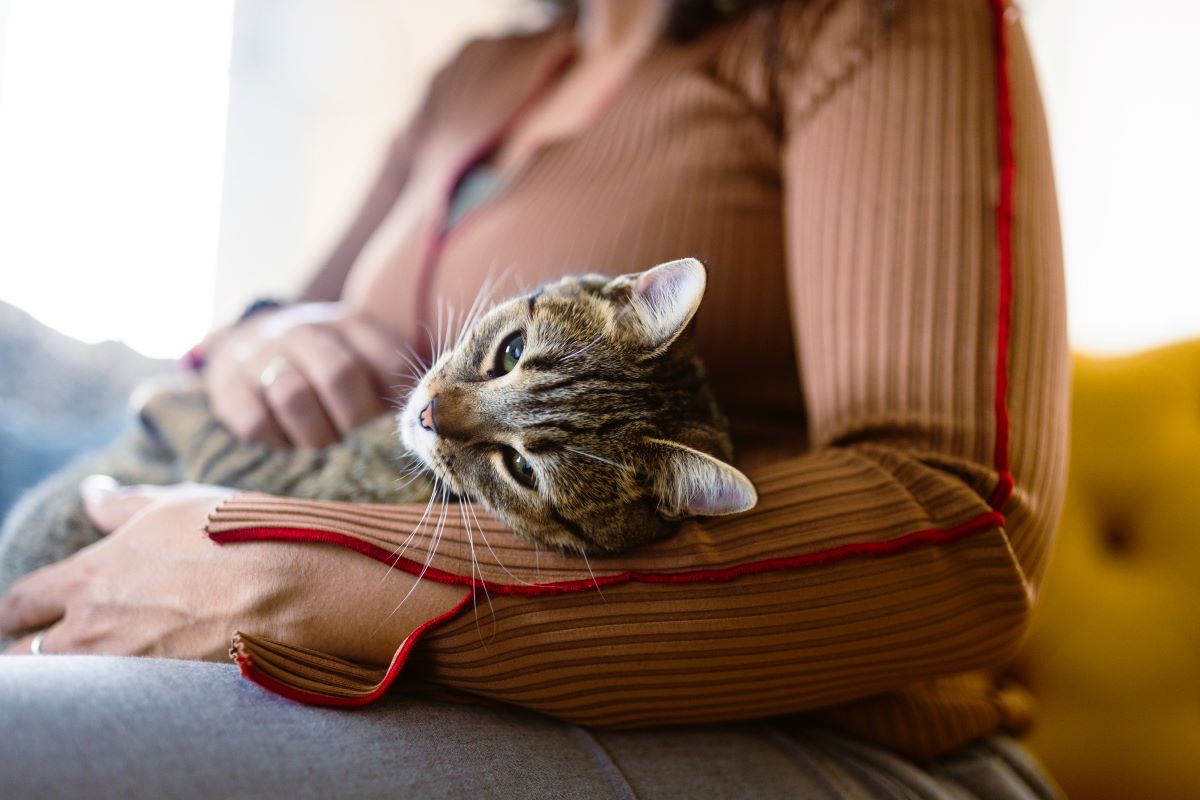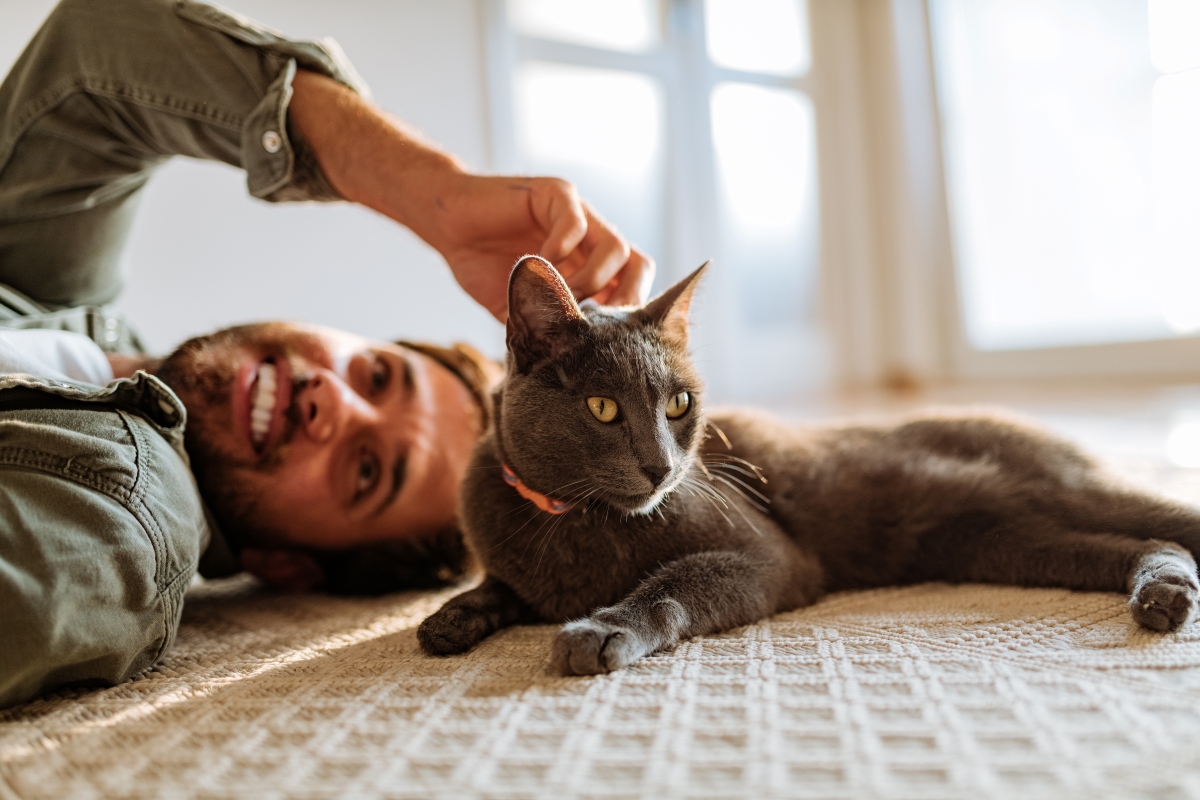Select a country and language
Regulatory constraints and medical practices vary from location to location. Consequently, the information provided on the site in which you enter may not be suitable for use at your location.
Asia Pacific
Europe















Latin America







North America
Getting your cat into its carrier and safely to the vets may be a stressful experience for both you and your cat. However, regular check-ups are important to make sure they stay fit and healthy, and they may have to visit the vets more frequently due to illness. So, how can you try to make it a more positive experience for all involved?

Why does my cat dislike going to the vet?
There are many reasons why a vet visit may be stressful for cats... and for us, their owners, as well!
Suppose someone were to unexpectedly grab you out of your comfortable home, put you in a box, and take you somewhere unknown. In that case, you too might experience some anxiety, so it’s easy to understand how your cat can feel the same way!
As a caring cat owner, this is exactly the first step to help them feel more comfortable - understanding the reasons why your cat becomes agitated. Here are some of the most common reasons:
Illness, pain, discomfort
Hopefully, your cat will only visit the vets for routine appointments, but if they are feeling unwell or in pain, this tends to make any stress or anxieties worse.
Changes to routine
As you know, cats are creatures of habit and love their routines, and vet visits usually involve a change to how they live at home. For example, they may not be allowed outside, or be fed at their normal feeding times, which can be confusing for your pet.
Travel
Cats are territorial, so being taken away from their home range is stressful for them. The motion of the car can also be unpleasant for some cats, who may feel nauseous or even be physically sick.
Lack of escape route
Many cats will prefer to use the ‘flight’ option and run away when scared, but a vet visit prevents this as they are put into a cat carrier. Cats also like to be up high, so being stuck in a basket placed on the floor can be alarming for them.
Unfamiliar sensations
Cats are sensitive to smells and to unfamiliar touch, both of which they may well experience at the vets. They often interpret this as a threat – but of course, they can’t get away.
Previous experiences
Sadly, but probably inevitably, some cats will remember previous unpleasant trips to the vets, which may create a negative association. After all, they don’t know that we’re injecting them to keep them safe from illness, or to treat disease: from their point of view, we’re just poking them with sharp objects.
What can I do to make it easier?
Though you may believe your cat will always feel stressed when going to the vets, especially if this is how it’s been in your past experiences, we’d like to reassure you that it can get better!
Vet appointments are important, and it is essential that these are carried out, so working to make the experience as easy as possible is paramount.
Here are some things you can do to reduce your cat’s stress – and yours!
Time your trip well
If you can plan your visit in advance, try timing your visit so that your cat’s routine doesn’t need to be hugely altered.
For example, pick a time slightly after their usual mealtime so that you can be confident your cat will be in at that time and can be placed in the basket and taken straight to the vets. Obviously, if your cat is unwell and needs an urgent appointment, this may not be possible – but if it is an appointment you can adjust, see what you can do.

Use a good carrier
It is not safe to transport a cat loose in a car or in your arms to a vet – even if they are sick or are used to a harness.
Finding a cat basket which is both easy to use and sturdy is important for safe pet travel. Choose one which is durable (cardboard can easily be defeated by a cat!), opens at the top for easy lifting in and out, and is easy to clean.
Getting them into the carrier
It will be easier to get your cat into the carrier if the carrier doesn’t only come out just before a trip. Ideally, the basket should be a normal part of the house and furniture so that it smells and looks familiar. Bonus points if your cat chooses to sleep or feed in it! At the end of the day, it’s a lot less scary to be in your safe place when worrying things happen outside, than it is to be pulled out of it and put somewhere new and disturbing.
Placing your cat’s usual bedding or an article of clothing that belongs to a bonded owner into the carrier can help reassure your cat, or rubbing a soft cloth over your cat’s face and then onto the carrier to spread natural pheromones can also help to calm them.
Spraying the carrier with a synthetic pheromone, using natural calmers, or prescription calming medications are also options that can make the whole experience less worrying – talk to your vet for details.
The journey
Once your cat is safely in the carrier, cover the carrier with a towel or blanket to make it darker inside, which can help keep your cat calm. Place it securely in the car – either wedged into a footwell or fastened with a seatbelt. Try to make sure the carrier is level, not tilted. Drive carefully and slowly to the clinic. We know you want to get there sooner, so you can get them out and reassure them, but no-one likes to be thrown around, human or cat.
The waiting room
All vet clinics are different in their space, layout and organisation, with some clinics managing to make their spaces and staff extra friendly to cats – look up cat-friendly clinics to find one. Ideally, there should be a separate waiting area for cats. Try to place your cat carrier up on a shelf rather than on the floor, and keep it covered with that towel or blanket so that your cat cannot see other animals.
My cat goes crazy when they see the carrier, help!
Don’t panic, this is a common problem!
If your cat is resisting transport, and you don’t have time to let them get used to the carrier, there are still ways to make it less of a fight and avoid any injury! Keep the basket close behind you so that it is within reach, but your cat cannot see it. Get a thick blanket or towel, preferably one that smells familiar to your cat, and wrap the cat quickly but gently in it. Immediately place the cat and towel into the carrier behind you and close the door. A top-opening basket makes it much easier to use this method.
Though you may feel like you’re betraying your cat’s confidence by using this technique, try to keep in mind that after this visit, you can start working on getting them used to the carrier and hopefully this won’t be necessary for next time.
Having a cat who travels calmly and easily to the vets can be a huge relief and reduce stress at what can be a worrying time. Try to remain calm even if the process is stressful and frustrating, as this will help keep your cat calm and safe as well.
Talk to your vet to find out how they can promote a positive experience on their end as well, and together, you’ll achieve the best results!









